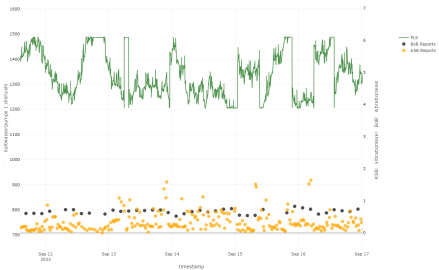AI support in finding patterns
The data can not only be examined in the conventional way, but also analyzed using artificial intelligence. This allows patterns to be searched for automatically without the need for explicit instructions.
Unsupervised learning algorithms are used for this. These have the advantage that no prior, possibly resource-intensive, training is required, as the corresponding model is created interactively during the analysis. In this way, a customized analysis can be performed for each combination of data points to identify hidden patterns that would otherwise have remained undetected. Our experience shows that this innovative approach provides unprecedented insights into the condition of machines and systems.
The combination of all this significantly reduces the workload: “We now have around ten maintenance jobs per month on the systems, during which the bearings are lubricated, as well as irregular situations in which imminent damage is averted - in a targeted manner! This extends the service life of the systems and major damage occurs less frequently,” says Mollard.
What does that mean in figures? “In an exemplary damage event, we were able to make significant cost savings: If we hadn't intervened in time, damage of € 12,500 to € 25,000 would certainly have occurred. So we were able to repair the system for around € 3,500.” Mollard estimates that similar cases occur four to six times a year per system. Overall, this extends maintenance cycles and detects impending damage at an early stage. The IoT-PLS-Miner is designed so that it can easily be rolled out to other Infraserv plants.



